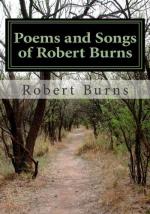|
This section contains 5,839 words (approx. 20 pages at 300 words per page) |

|
SOURCE: "Burns and Narrative," in The Art of Robert Burns, edited by R.D.S. Jack and Andrew Noble, Vision and Barnes & Noble, 1982, pp. 59–75.
In the following essay, Wells explores the narrative structure and didactic content of several of Burns's poems.
Almost everyone, if asked to categorize Burns's work, would describe him as a lyric poet; indeed, the popular image is that of incomparable master of love-songs. Burns, in keeping with his lyrical inclinations, is very much an occasional poet; his canon, in fact, contains well over one hundred poems of a more expository or dramatic nature: verse epistles, addresses, laments and elegies, a cantata, dramatic prologues and fragments, descriptions, epigrams, dialogues, and dramatic monologues.
No one, I believe, would place Burns among the narrative poets. Including 'Tam o' Shanter', there are barely a handful of poems Burns himself thought of as 'a true story' or 'a tale'...
|
This section contains 5,839 words (approx. 20 pages at 300 words per page) |

|


